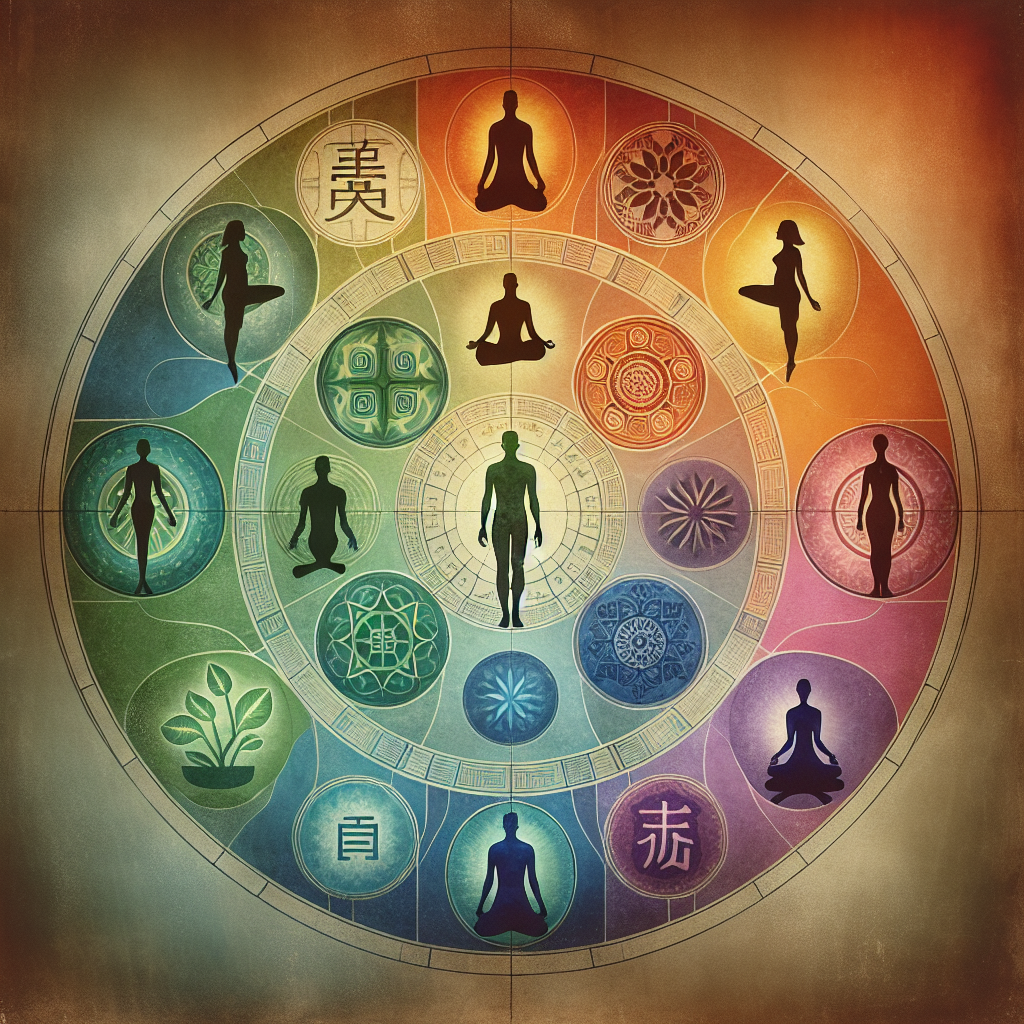When Sarah received her custom vitamins blood test results, the numbers told a clear story: low vitamin D, borderline B12, and slightly elevated inflammation markers. Her doctor prescribed standard supplements and sent her on her way. Three months later, despite diligently taking her vitamins, Sarah felt no better. Her digestive issues persisted, her energy remained low, and her sleep was still disrupted. What went wrong?
The answer lies in a fundamental truth that modern medicine is only beginning to rediscover: lab numbers tell us what is happening in your body, but they don’t always reveal why it’s happening or how your unique constitution will respond to treatment. This is where the ancient wisdom of Traditional Chinese Medicine meets cutting-edge diagnostic technology, offering a more complete picture of health that goes far beyond what any blood test can show alone.
Understanding Custom Vitamins Blood Tests in Context
Custom vitamins blood tests have revolutionized our ability to understand nutritional deficiencies with precision. These comprehensive panels analyze dozens of biomarkers, measuring everything from vitamin levels and mineral concentrations to hormone balance and metabolic function. For health-conscious individuals seeking personalized wellness approaches, these tests provide invaluable quantitative data about what’s happening inside the body at a molecular level.
The appeal is obvious: instead of guessing which supplements you need, you get concrete evidence. Your vitamin D level is 22 ng/mL when it should be above 30. Your iron stores are depleted. Your B12 is borderline. Armed with this information, you can create a targeted supplementation strategy that addresses your specific deficiencies.
But here’s what the numbers don’t tell you: Why is your body not absorbing these nutrients properly? Why did these deficiencies develop in the first place? And most importantly, what does your unique body constitution need to restore balance and actually utilize these supplements effectively?
This is where custom vitamins blood tests, while valuable, fall short when used in isolation. They capture a moment in time but miss the dynamic, interconnected patterns that define your individual health landscape.
The Bridge Between Modern Diagnostics and Ancient Wisdom
Traditional Chinese Medicine has spent 2,000 years developing sophisticated methods for understanding individual body constitutions. Through techniques like pulse diagnosis, tongue analysis, and comprehensive pattern differentiation, TCM practitioners assess the flow of Qi (vital energy), the balance of Yin and Yang, and the harmony of your Five Elements. These qualitative assessments reveal information that no blood test can measure: the strength of your digestive fire, the smoothness of your energy flow, the depth of your constitutional reserves.
When we integrate modern diagnostics with TCM assessment, something remarkable happens. The quantitative precision of blood tests gains context and meaning through the qualitative wisdom of constitutional analysis. A low vitamin D level, for instance, might indicate different underlying patterns in different individuals. Someone with a Yang-deficient constitution and weak digestive fire may struggle to absorb fat-soluble vitamins regardless of intake. Another person with Liver Qi stagnation might have adequate vitamin D but poor utilization due to blocked energy flow.
Consider James, a 45-year-old with chronic fatigue whose blood tests showed multiple vitamin deficiencies. Standard supplementation helped minimally. When his health practitioner incorporated TCM assessment, they discovered he had a Spleen Qi deficiency pattern—his digestive system lacked the energetic strength to properly transform and transport nutrients. The solution wasn’t just more vitamins; it was strengthening his digestive fire through specific herbs, warming foods, and lifestyle modifications that addressed his constitutional weakness. Within weeks, his energy improved dramatically as his body finally began absorbing and utilizing the nutrients it needed.
This integration of modern and ancient diagnostic approaches creates a three-dimensional view of health. Blood tests provide the “what”—the measurable deficiencies and imbalances. TCM assessment provides the “why” and “how”—the underlying patterns and constitutional factors that created those imbalances and determine how your body will respond to treatment.
Complementary Approaches for Comprehensive Care
The true power of combining custom vitamins blood tests with TCM lies in creating personalized treatment plans that address both physical symptoms and energetic imbalances. This complementary approach recognizes that optimal health isn’t just about correcting numbers on a lab report—it’s about restoring harmony to your entire system.
In TCM, we understand that symptoms rarely exist in isolation. Your low iron might be connected to your poor sleep, which relates to your digestive issues, which stem from chronic stress depleting your Kidney essence. Blood tests might identify the iron deficiency and recommend supplementation, but without addressing the underlying pattern of depletion and the cascade of imbalances it created, the symptom will likely return.
Modern functional medicine practitioners are increasingly recognizing this interconnected reality. They’re moving beyond the reductionist approach of “one deficiency, one supplement” toward a more holistic model that considers how different body systems influence each other. This aligns beautifully with TCM’s fundamental principle: the body is an integrated whole where everything affects everything else.
When we use comprehensive lab tests to inform TCM treatment strategies, we can target interventions with unprecedented precision. We might discover through blood work that someone has elevated cortisol and depleted DHEA—markers of chronic stress affecting the adrenal system. TCM would recognize this as Kidney Yang deficiency with potential Heart-Kidney disharmony. The treatment plan could then include specific adaptogenic herbs to support adrenal function, dietary recommendations based on warming, nourishing foods, stress-reduction practices like Qi Gong, and targeted nutrients to support hormone production—all tailored to the individual’s specific constitutional pattern.
This isn’t about choosing between modern science and ancient wisdom. It’s about recognizing that each offers unique insights, and together they create a more complete picture than either could alone.
The Functional Medicine Perspective on Personalized Nutrition
Functional medicine has emerged as a bridge between conventional healthcare and holistic approaches, emphasizing personalized nutrition and lifestyle modifications based on individual biochemistry. This perspective resonates deeply with TCM principles, particularly the understanding that there are hidden causes beneath every chronic condition.
In functional medicine, practitioners look beyond surface symptoms to identify root causes—chronic inflammation, gut dysbiosis, hormonal imbalances, toxic burden, or nutrient deficiencies. They use comprehensive testing, including custom vitamins blood tests, to gather objective data about these underlying factors. But the best functional medicine practitioners don’t stop at the test results. They ask deeper questions: What lifestyle factors contributed to these imbalances? What is this person’s toxic exposure? How is their stress affecting their physiology? What patterns connect seemingly unrelated symptoms?
These questions mirror TCM’s diagnostic approach. When a TCM practitioner identifies Liver Qi stagnation, they’re recognizing a pattern of blocked energy flow that might manifest as irritability, digestive issues, menstrual irregularities, and tension headaches—symptoms that conventional medicine might treat as separate conditions. Similarly, a functional medicine practitioner might identify multiple imbalances—elevated inflammatory markers, poor methylation, gut permeability—and recognize them as interconnected pieces of a larger pattern.
The focus on personalized nutrition is where these approaches converge most beautifully. TCM has always recognized that food is medicine, with different foods affecting the body’s energetic balance in specific ways. The thermal nature of foods (warming versus cooling), their flavor profiles (sweet, sour, bitter, pungent, salty), and their organ affinities all influence how they affect individual constitutions.
Modern nutritional science is now validating many of these ancient principles. We understand that someone with chronic inflammation might benefit from anti-inflammatory foods rich in omega-3s and polyphenols. TCM would recognize this same person might have excess Heat or Dampness-Heat in their system and recommend cooling, clearing foods. The recommendations, while arriving from different frameworks, often align remarkably well.
Consider metabolic health. Someone struggling with blood sugar regulation might show elevated glucose and insulin levels on blood tests. A functional medicine approach would focus on balancing blood sugar through dietary modifications, specific nutrients like chromium and alpha-lipoic acid, and lifestyle changes. A TCM practitioner would recognize potential Spleen Qi deficiency affecting glucose metabolism and recommend strengthening the Spleen through warming, easily digestible foods, herbs like astragalus and atractylodes, and avoiding damp-forming foods that burden the digestive system. When these approaches combine, the person receives both targeted nutritional support based on their lab values and constitutional guidance that addresses their energetic patterns.
Evidence Supporting Integrated Approaches
The integration of contemporary nutritional science with TCM isn’t just philosophical—it’s increasingly supported by evidence-based research. Studies are demonstrating that combining these approaches leads to better outcomes for various chronic conditions than either approach alone.
Research on diabetes management provides compelling examples. A study examining the integration of TCM herbal formulas with conventional diabetes care found that patients receiving combined treatment had better glycemic control and fewer complications than those receiving standard care alone. The herbs worked through multiple mechanisms—some enhanced glucose transport into cells, others improved glycogen metabolism, and still others increased GLP-1 secretion. These mechanisms align with modern pharmacology while embodying TCM’s principle of addressing multiple aspects of imbalance simultaneously.
Another study on Traditional Chinese Medicine pulse diagnosis used machine learning to analyze the diagnostic accuracy of this ancient technique. The results showed that pulse diagnosis could identify patterns of imbalance that correlated with measurable physiological changes, validating that TCM’s qualitative assessments capture real information about body function that complements quantitative testing.
Research on individualized nutrition based on constitution type has shown promising results as well. Studies examining how people with different metabolic types respond to the same diet have found significant variations, supporting TCM’s principle that one-size-fits-all approaches miss crucial individual differences. Some people thrive on higher protein diets while others need more carbohydrates, and these preferences often align with their TCM constitutional patterns.
The evidence extends to supplement efficacy. Research shows that nutrient absorption and utilization vary significantly based on gut health, inflammation levels, and metabolic function—all factors that TCM assessment helps identify through its diagnostic methods. A person with poor digestive fire (Spleen Qi deficiency) might have difficulty absorbing supplements even when deficiencies are identified through blood tests, explaining why standard supplementation sometimes fails despite accurate testing.
Practical Applications for Comprehensive Wellness
So how does this integrated approach work in practice? How can you use comprehensive lab tests to refine your understanding of your body constitution and create truly personalized wellness strategies?
The process begins with gathering both quantitative and qualitative information. A comprehensive metabolic panel, vitamin and mineral testing, hormone assessment, and inflammatory markers provide the objective data about what’s happening in your body. Simultaneously, a thorough constitutional assessment through TCM principles—evaluating your energy levels, digestion, sleep quality, emotional patterns, temperature sensitivities, and physical symptoms—reveals your underlying patterns and predispositions.
With this complete picture, health practitioners can identify not just what nutrients you’re deficient in, but why those deficiencies developed and what your body needs to actually utilize supplementation effectively. They can see connections that single-lens approaches miss. Maybe your low B12 isn’t just about inadequate intake—it’s related to poor stomach acid production from Spleen Yang deficiency. Maybe your iron deficiency connects to heavy menstrual bleeding caused by Liver Blood deficiency. Maybe your vitamin D levels won’t normalize until you address the chronic stress depleting your Kidney Yang and impairing nutrient absorption.
The resulting treatment plan becomes truly personalized, addressing your unique constitution rather than just your lab values. It might include targeted supplements based on your test results, but also herbs to address your constitutional patterns, dietary recommendations aligned with your energetic needs, lifestyle modifications to support your specific imbalances, and practices to strengthen your body’s inherent capacity to maintain balance.
This approach encourages collaboration between different medical disciplines. Your primary care physician might order comprehensive blood work. A functional medicine practitioner might interpret those results through a root-cause lens. A TCM practitioner might identify constitutional patterns and recommend energetic support. When these perspectives inform each other rather than competing, you receive the most complete care possible.
The key is recognizing that different types of information serve different purposes. Lab tests excel at measuring what is, providing precise data about current status. Constitutional assessment excels at understanding context, revealing why things are the way they are and predicting how your unique system will respond to interventions. Together, they create a roadmap for achieving not just better numbers, but genuine, lasting wellness.
Embracing Holistic Harmony Through Integrated Understanding
The future of personalized health lies not in choosing between modern diagnostics and ancient wisdom, but in recognizing how each enhances the other. Custom vitamins blood tests offer unprecedented insight into your body’s nutritional status, providing objective data that can guide targeted interventions. But when combined with TCM’s sophisticated understanding of individual constitution, energy patterns, and holistic balance, those lab numbers gain deeper meaning and practical relevance.
Your body is more than a collection of measurable biomarkers. It’s a dynamic, interconnected system where physical symptoms, emotional states, energetic patterns, and environmental influences continuously interact. True wellness requires addressing all these dimensions, understanding not just what’s out of balance but why, and tailoring recommendations to your unique constitutional needs.
This integrated approach recognizes that optimal health isn’t achieved through supplements alone, or herbs alone, or dietary changes alone. It emerges from understanding your individual patterns, supporting your body’s natural healing capacity, and creating harmony across all systems. It means recognizing that your low vitamin D might require not just supplementation but also addressing the digestive weakness preventing absorption, the chronic stress depleting your reserves, and the lifestyle patterns disrupting your natural rhythms.
For health-conscious individuals seeking truly personalized wellness guidance, merging modern diagnostics with constitutional assessment offers a pathway to deeper understanding and more effective results. It honors both the precision of contemporary science and the wisdom of 2,000 years of traditional medicine. It treats you not as a collection of symptoms to be managed, but as a unique individual seeking to unlock your body’s innate potential for balance and vitality.
The numbers matter, but they’re not the whole story. Your body constitution, your energetic patterns, your individual responses—these factors determine how those numbers manifest as symptoms and how effectively any intervention will work. By embracing both quantitative testing and qualitative assessment, you gain access to a more complete picture of your health and a clearer path toward the holistic harmony you seek.




